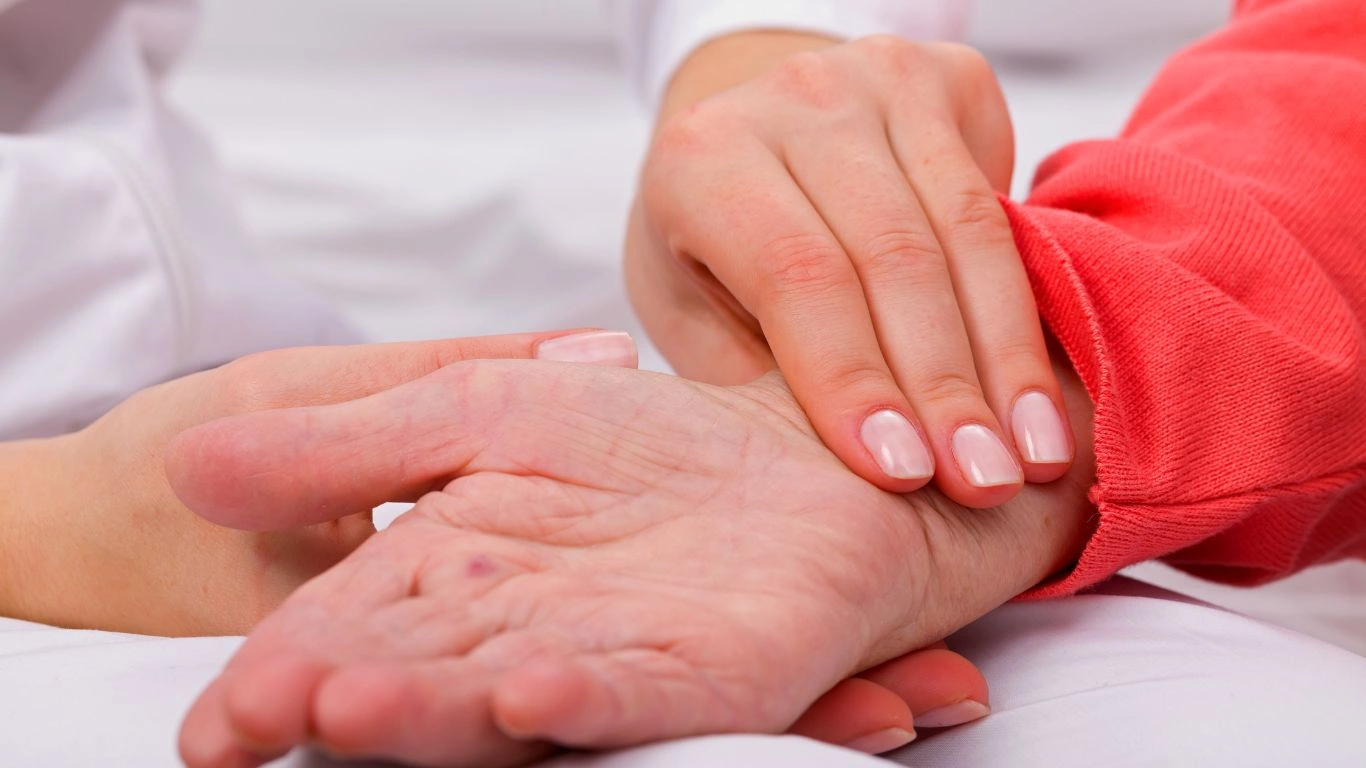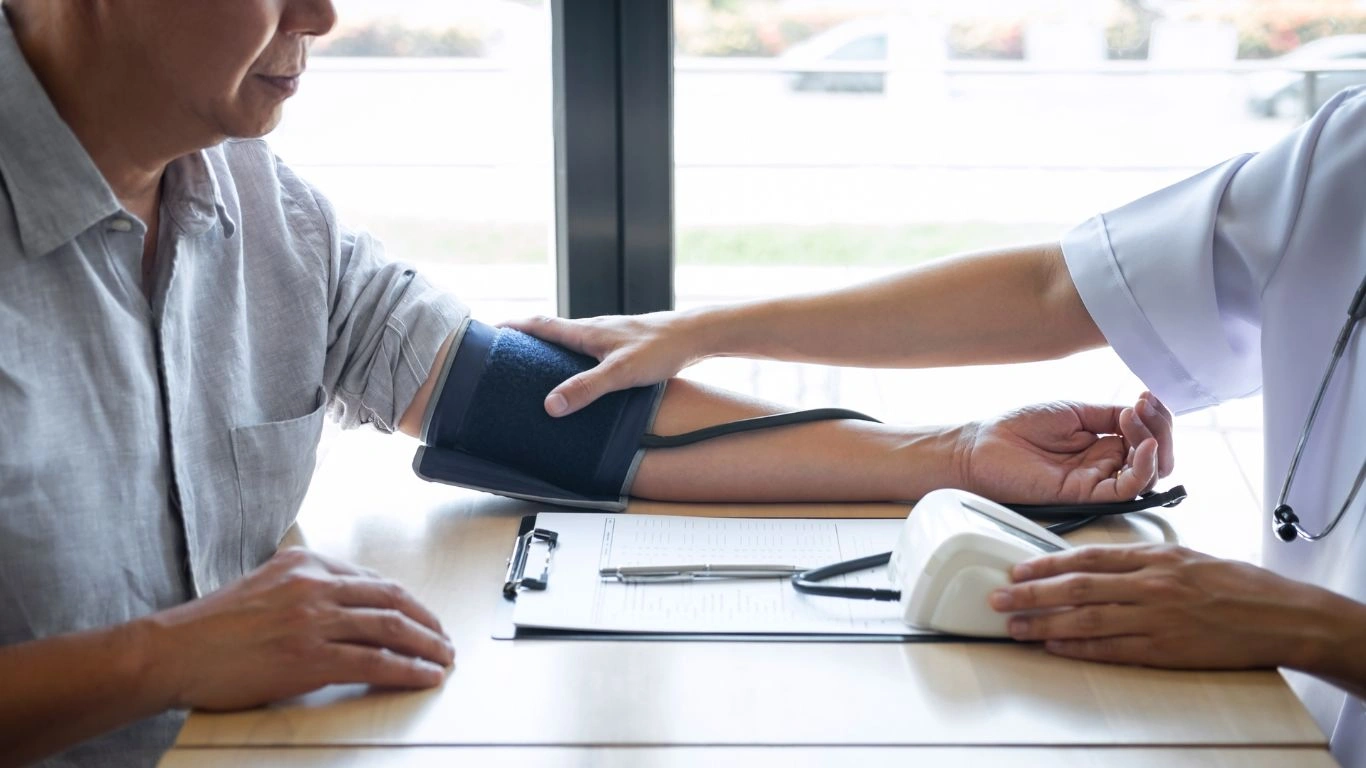How Fiber Helps Control Blood Pressure Naturally & Effectively
High blood pressure is like a silent alarm—often ignored until it becomes a major problem. As someone who has spent years in the field of hypertension, I’ve seen firsthand how small dietary tweaks can make a world of difference. One simple yet powerful change? Adding more fiber to your diet. How fiber helps control blood pressure isn’t just a trending topic—it’s science-backed, practical, and incredibly effective. Let’s break it down in a way that’s easy to digest (pun intended!).
Why Fiber Is a Game-Changer for Blood Pressure

When I counsel patients on lifestyle changes, the first thing I look at is their diet. And you’d be surprised how many people are seriously lacking in fiber. This isn’t just bad for digestion—it directly impacts blood pressure.
Here’s why fiber is such a powerhouse when it comes to heart health:
- Regulates Blood Sugar: Spikes in blood sugar can lead to insulin resistance, which is linked to hypertension. Fiber slows down sugar absorption, keeping things steady.
- Reduces Bad Cholesterol: Soluble fiber binds to cholesterol in the gut, preventing it from clogging arteries—one of the sneaky causes of high blood pressure.
- Promotes Healthy Weight: Carrying extra weight strains the heart. Fiber keeps you full longer, reducing overall calorie intake without feeling deprived.
- Supports a Healthy Gut: Believe it or not, gut health plays a role in blood pressure regulation. A fiber-rich diet feeds good gut bacteria, which helps maintain overall cardiovascular health.
Soluble vs. Insoluble Fiber: Which One Matters for Blood Pressure?

There are two main types of fiber, and each plays a role in maintaining healthy blood pressure:
Soluble Fiber: The Heart-Healthy MVP
Soluble fiber dissolves in water and forms a gel-like substance in the gut. This type is particularly helpful for lowering cholesterol and keeping blood sugar stable—both essential for heart health.
Top sources include:
- Oats and oat bran
- Beans and lentils
- Fruits like apples, pears, and berries
- Flaxseeds and chia seeds
- Vegetables like carrots and Brussels sprouts
Insoluble Fiber: The Digestive Powerhouse
While it doesn’t directly lower cholesterol, insoluble fiber is crucial for digestion and maintaining a healthy weight, which indirectly supports blood pressure control.
Top sources include:
- Whole grains like wheat bran and brown rice
- Vegetables such as broccoli, cauliflower, and leafy greens
- Nuts and seeds
How Much Fiber Do You Actually Need?

Most people fall short of the recommended fiber intake, which is:
- Women: At least 25 grams per day
- Men: Around 38 grams per day
But here’s the catch—suddenly doubling your fiber intake overnight can backfire. Trust me, I’ve seen it happen! It can lead to bloating, gas, and digestive discomfort. Instead, increase fiber gradually and drink plenty of water to help your body adjust.
Best Fiber-Rich Foods for Blood Pressure Control

Alright, so we know fiber is a game-changer for keeping blood pressure in check. But the big question is—what should you actually eat? A lot of people think fiber equals boring, but trust me, that couldn’t be further from the truth. There are tons of delicious, fiber-packed foods that can help lower blood pressure naturally.
Whole Grains: Your Heart’s Best Friend
Let’s start with a staple—whole grains. They’re an easy swap for refined grains (like white bread and pasta) and come with a serious fiber boost.
- Oats: A breakfast favorite that’s loaded with soluble fiber.
- Quinoa: A complete protein with fiber—perfect for heart health.
- Brown Rice: Better than white rice, with extra fiber and nutrients.
- Whole Wheat Bread & Pasta: More fiber, more nutrients, and way better for blood pressure than the refined stuff.
Fiber-Packed Fruits & Vegetables
Eating the rainbow isn’t just for Instagram-worthy salads—it’s a real strategy for heart health. Here are some top picks:
- Berries: Blueberries, raspberries, and blackberries are fiber superstars.
- Apples & Pears: Keep the skin on for maximum fiber.
- Bananas: Not just for potassium—they’ve got a good fiber punch too.
- Leafy Greens: Kale, spinach, and collard greens are packed with fiber and other blood pressure-friendly nutrients.
Legumes: The Underrated Powerhouses
Beans, lentils, and chickpeas don’t get nearly enough love. Not only are they fiber-rich, but they’re also packed with protein and minerals that help regulate blood pressure.
- Black Beans: Loaded with fiber and a great meat substitute.
- Chickpeas: Fantastic in hummus or roasted as a crunchy snack.
- Lentils: A staple in many cultures and incredibly nutritious.
How to Add More Fiber to Your Diet (Without the Bloat!)

Okay, so we’ve covered what to eat, but how do you actually incorporate more fiber into your daily meals without turning your digestive system into a battleground? I’ve seen so many people go from zero to 100 overnight—and let’s just say, their stomachs weren’t happy.
Here’s the trick: ease into it. Gradually increasing your fiber intake while staying hydrated is key. Here’s how you can do it painlessly:
- Start Your Day with Fiber: Swap sugary cereals for oatmeal, or add chia seeds to your yogurt.
- Upgrade Your Carbs: Choose whole wheat over white bread and opt for brown rice instead of white.
- Add More Vegetables: Toss extra greens into soups, omelets, or stir-fries.
- Snack Smart: Munch on nuts, seeds, or high-fiber fruits instead of chips.
- Stay Hydrated: Fiber absorbs water, so drink plenty of fluids to keep digestion smooth.
Common Myths About Fiber and Blood Pressure
There’s a lot of misinformation floating around when it comes to fiber and its role in heart health. Let’s bust some of the biggest myths:
Myth #1: Fiber Only Helps with Digestion
While fiber is famous for keeping things moving in the gut, its benefits go far beyond digestion. It actively lowers cholesterol, regulates blood sugar, and helps maintain a healthy weight—all of which play a huge role in blood pressure control.
Myth #2: You Need Supplements to Get Enough Fiber
Sure, fiber supplements exist, but they’re not necessary for most people. If you’re eating a diet rich in whole foods, you can easily meet your daily fiber needs naturally.
Myth #3: Fiber Works Instantly
Unlike medication, fiber isn’t a quick fix for high blood pressure. It works best as part of a long-term, heart-healthy lifestyle. The good news? Even small changes can lead to noticeable improvements over time.
Case Studies & Real-Life Examples

Now, let’s get real. It’s one thing to talk about the science behind fiber and blood pressure, but what really makes it click is hearing how it changes lives. Over the years, I’ve worked with countless patients who struggled with hypertension, and I’ve seen firsthand how a fiber-rich diet can make a difference.
Case Study #1: Mark’s Journey from Hypertension to Heart Health
Mark, a 52-year-old office worker, came to me with Stage 2 hypertension. His diet? Mostly processed foods, lots of refined carbs, and barely any fiber. We made gradual changes—starting with a bowl of oatmeal every morning and swapping white rice for quinoa. Within three months, his blood pressure had dropped by 12 points, and he felt more energized than ever.
Case Study #2: Lisa’s Blood Pressure Turnaround
Lisa, a 38-year-old mother of two, was borderline hypertensive and prediabetic. Her fiber intake was shockingly low. We added more beans, lentils, and leafy greens to her meals, and within six months, not only was her blood pressure under control, but her blood sugar had also stabilized. The best part? She said she never felt deprived—just healthier.
Key Takeaways: What You Need to Remember
Let’s sum it all up. If you take nothing else from this article, remember these key points:
- Fiber is your secret weapon. It helps lower blood pressure, control cholesterol, regulate blood sugar, and support a healthy weight.
- Whole foods are best. Get fiber from natural sources like whole grains, fruits, vegetables, and legumes.
- Increase fiber gradually. Don’t go from 10g to 40g overnight—your gut won’t thank you.
- Hydration matters. Fiber works best when paired with plenty of water.
- Consistency is key. The benefits of fiber don’t happen overnight, but stick with it, and your heart will thank you.
FAQs
Q: Can fiber alone lower my blood pressure?
A: While fiber is a powerful tool, it works best as part of a balanced lifestyle. Regular exercise, stress management, and limiting sodium intake all play a role.
Q: What’s the best type of fiber for blood pressure?
A: Soluble fiber (found in oats, beans, and fruits) is especially helpful for heart health, but a mix of both soluble and insoluble fiber is ideal.
Q: How long does it take for fiber to impact blood pressure?
A: It varies, but most people start seeing benefits within a few weeks to a few months, depending on their overall lifestyle.
Q: Should I take fiber supplements?
A: Whole food sources are always best, but if you struggle to get enough fiber, supplements like psyllium husk can help. Just be sure to check with your doctor first.
Bonus: Additional Resources & DIY Tips
Want to take your fiber intake to the next level? Here are some simple DIY tips:
- Make your own high-fiber smoothie: Blend spinach, chia seeds, flaxseeds, banana, and oats for a fiber-packed breakfast.
- Try fiber-rich baking: Swap white flour for whole wheat or oat flour in your favorite recipes.
- Batch-cook beans and lentils: Cook once and add them to salads, soups, or grain bowls throughout the week.
Appendix: References & Call to Action
For more in-depth reading on fiber and blood pressure, check out these trusted sources:
Disclaimer: This article is for informational purposes only and should not replace professional medical advice. Always consult a healthcare provider before making dietary changes.
If you found this article helpful, share it with someone who could benefit from it! And if you have questions, drop them in the comments—I’d love to hear from you.

Dr. Gwenna Aazee is a board-certified Internal Medicine Physician with a special focus on hypertension management, chronic disease prevention, and patient education. With years of experience in both clinical practice and medical writing, she’s passionate about turning evidence-based medicine into accessible, actionable advice. Through her work at Healthusias.com, Dr. Aazee empowers readers to take charge of their health with confidence and clarity. Off the clock, she enjoys deep dives into nutrition research, long walks with her rescue pup, and simplifying medical jargon one article at a time.






